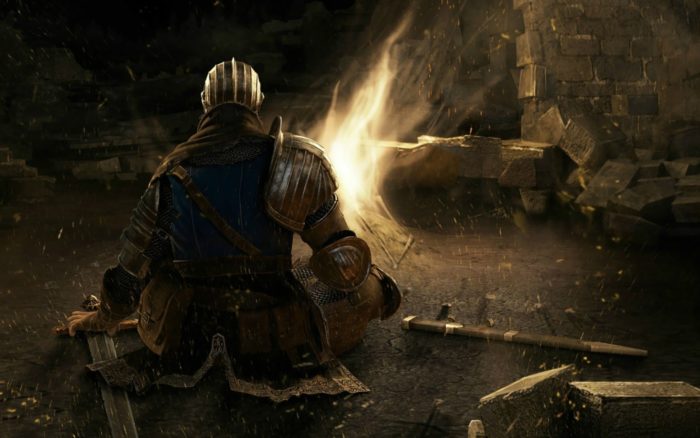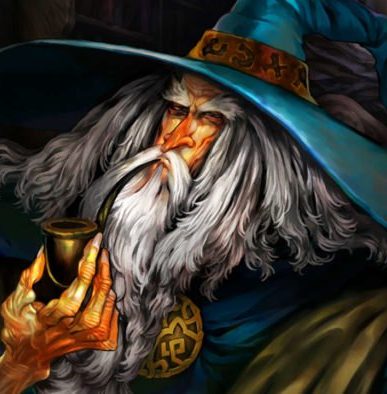When we talk about Dark Souls, we often mention the series’ challenging boss fights, and how rage-inducing the game can be as a whole. To a lesser extent, we might also bring up the series’ remarkable level design and how From Software has become so adept at creating new fantasy locations and linking them together with cohesive world design that just makes sense. It’s not very often that you’d hear praise or conversation surrounding the game’s soundtrack. At least not until Bloodborne and Dark Souls III rolled around when it became obvious that From Software had decided that music did play a very integral role in establishing the identity of a boss and the atmosphere of the fight itself.
Yes, indeed; music does matter in a game like Dark Souls. And while the first game in the beloved series doesn’t exactly have the strongest soundtrack, it’s here that we see the roots of the grotesque soundscape start to take hold.
Before working on Dark Souls, composer Motoi Sakuraba was known for his Japanese progressive rock solo works. He had a musical style that would probably be better suited to JRPGs like Tales (which he did work on) and even Persona. Coming into Dark Souls, though, Sakuraba expanded upon the groundwork established by Shinsuke Kida during his Demon’s Souls days.
The bulk of Dark Souls’ soundtrack consists of dramatic orchestral swells, pounding organs, and guttural notes that accentuate the game’s dark fantasy tones. The Prologue track follows the Souls tradition of introducing low vocals to set the stage, with ominous notes as the throaty narrator gives us the breakdown of what’s going on in Lordran. It’s not long before we’re thrust into the game’s first boss fights, and this is where the soundtrack really starts to shine. Unfortunately, though, not every boss has their own unique musical theme. Taurus Demon is a track we hear multiple times during the early hours as we make our way through the Undead Asylum and the Undead Burg. While a good piece on its own, it quickly loses its impact and memorability factor as you fight more bosses.
Still, for a game that’s mostly shrouded in musical silence, the boss fights themselves truly do feel grander when the soundtrack roars into life. Taurus Demon and Bell Gargoyle are the standouts here, evoking a true sense of dark fantasy with swelling melodies and a deep male choir. I’d be remiss not to mention Ornstein & Smough, which is probably the epitome of grand fantasy in the Dark Souls soundtrack. It certainly is fitting that the best bosses in the game should have the most epic musical theme. Similar to Bell Gargoyle, O&S features a heart-pounding melody that ascends higher and higher, before coming back down not-so-gently with an impressive organ line.
As the game progresses, Sakuraba plays around with more interesting melodies and ideas for the unique bosses. Chaos Witch Quelaag is a track that sounds foreboding all throughout but alleviates some of that tension when the female vocals launch into a refrain of musical desperation.
Conversely, Pinwheel’s theme is quieter but it contains a tinge of unease – something that’s brought to the forefront by the sinister whispering in the background. Often laughed at as one of the easiest joke bosses in Souls history, Pinwheel’s lore is actually rather unsettling. The lore tells a tale of a necromancer who had become obsessed with Gravelord Nito’s power, and this eventually led to the death of his wife and child. After Nito resurrected him, Pinwheel continued to pursue his necromancy research and tried to revive his family. The result? The souls of his wife and child were merged into his own, turning him into a malformed monster with three souls swirling in one being. It’s probably one of the darkest and most disturbing stories we come across in Dark Souls, and if you took the time to drag out that Pinwheel fight and prolong it a little, you’ll find that the incessant whispering in that boss track is a wonderfully creepy complement to his story.
I like to think that all that whispering actually comes from his wife and child’s souls from inside Pinwheel’s head, and he can’t escape them because of what he’s done. Anyway, moving on.
Amidst all of the grand, cinematic orchestral pieces, there’s tenderness to be found in Dark Souls’ soundtrack as well. As frightening as Lordran may be at first glance, a deeper look into the world’s lore reveals an underlying sadness shared by its denizens – a sentiment that’s perfectly conveyed in Firelink Shrine. This piece is primarily dominated by strings and a harp track, and it’s probably the most recognizable theme by virtue of what it represents: a truly safe haven in Lordran that’s home to (mostly) friendly faces. Firelink Shrine is where the lost Undead come to gather, and it’s where they lament their lot in life.
The Undead are cursed to live out the rest of their existence while waiting to hollow, or try to ring the bells and potentially die in the process and hollow out anyway. “I don’t really care,” the Crestfallen Warrior tells you when you first arrive at Firelink Shrine, “I’m simply crestfallen.”
The soundtrack only really starts to hit hard as we reach the tail-end. Gradually, the chaotic nature of Dark Souls’ music starts to dissipate, and it gives way to more tender pieces like Dark Sun Gwyndolin and Gwyn, Lord of Cinder. As the final boss theme, Lord of Cinder is a piano ballad that serves as the tragic conclusion to the story you’ve been picking up all throughout your journey in Lordran. Unlike the rest of the boss themes, Lord of Cinder goes full melancholy without holding anything back. This isn’t a fight that’s meant to be grandiose or epic in scale; instead, it’s a mercy killing as the Chosen Undead finally puts Gwyn to rest and becomes heir to the flame.
After defeating Gwyn, the credits roll, and we’re treated to the final song in the soundtrack. Aptly titled Nameless Song, it’s a dedication to the player, the nameless Chosen Undead who kills Gwyn and inherits the flame. Alongside Firelink Shrine, Nameless Song is another recognizable track thanks in no small part to the lovely vocals provided by Emi Evans, who’s probably best known for her work on the NieR soundtracks.
Instead of singing actual words this time around, Evans simply provides vocals to a harp and piano backdrop. It’s quite possibly the best reward you could get for sticking with the game and seeing it all the way through to the end. On the surface, Dark Souls as a game is unforgiving and unrelenting with the challenges it throws at the player. The first half of the game presents an overwhelming, stress-inducing kind of chaos. The latter half, however, is where you begin to see the game’s true nature. Dark Souls tells its dark, desolate story through poetically written item descriptions and touching musical pieces that accompany meaningful boss fights.
Nameless Song represents the ambiguous end of a grueling journey, and it’s a fitting close to the soundtrack. While it certainly doesn’t have the strongest soundtrack in the series (that honor goes to Dark Souls III, no contest), Sakuraba still delivers an absolutely stellar collection of music that ingrains itself in the player’s consciousness long after you’ve set the game down and moved on to other things.
Not unlike the game itself, Dark Souls’ soundtrack is a fantasy gem that evokes a sense of longing and nostalgia even without the context of the story. The bulk of the collection is a chaotic swirl, but the overall composition of the soundtrack strikes a delicate balance between the harsh and melancholy that is absolutely splendid.


There are no comments.